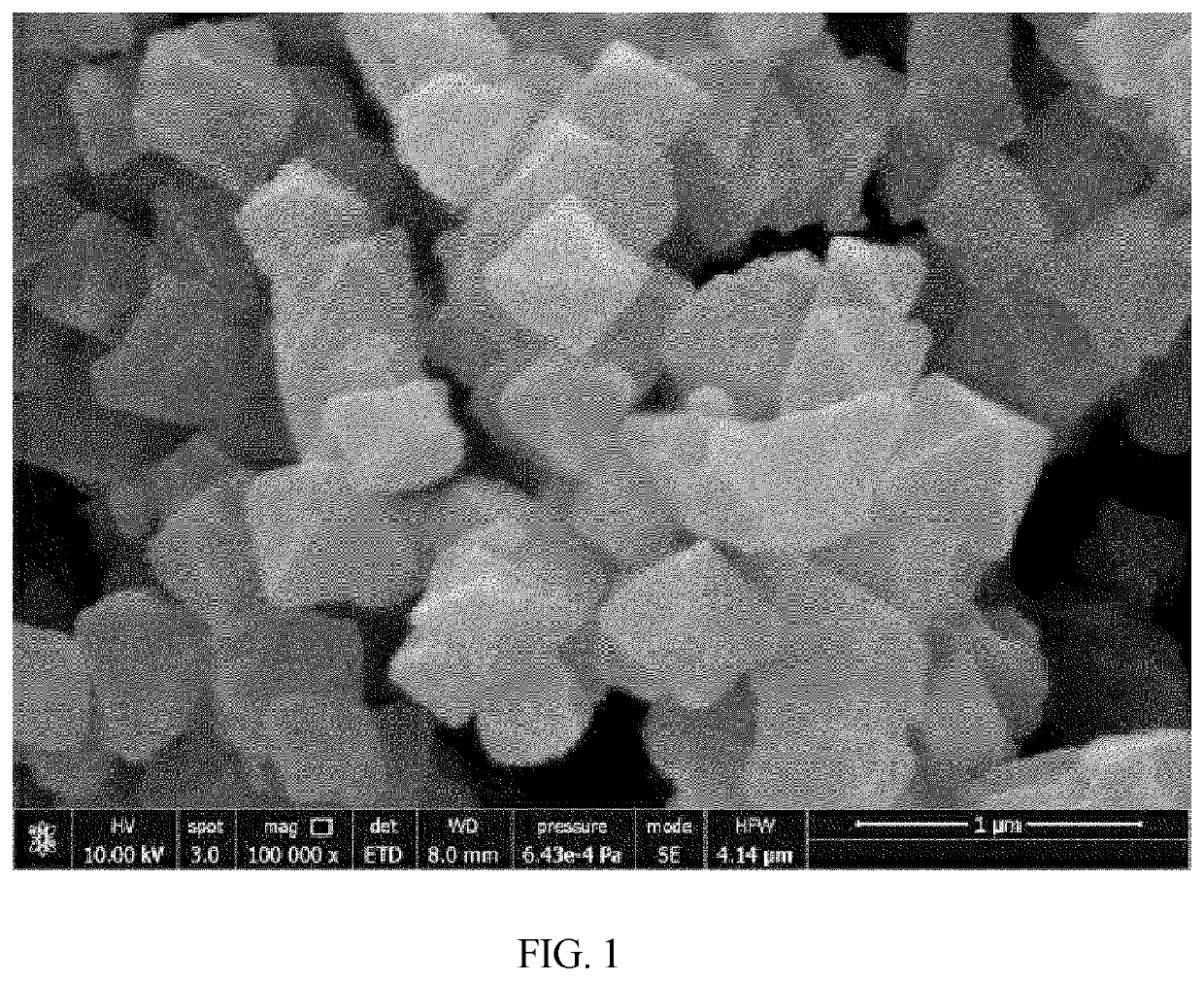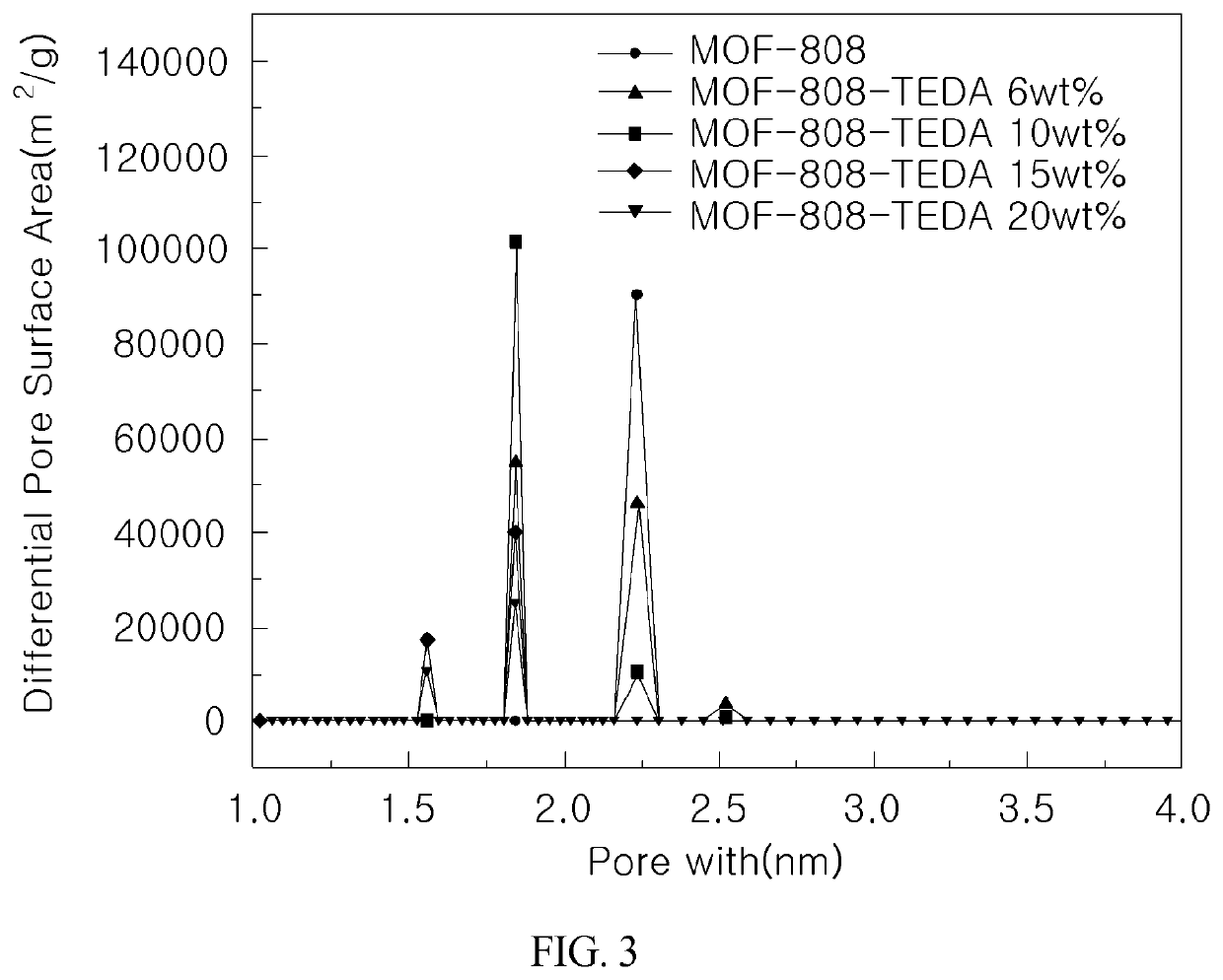Method for detoxifying liquid chemical warfare agents using surface-modified metal organic framework
a metal organic framework and chemical warfare agent technology, applied in the field of liquid chemical agent detoxification, can solve the problems of high toxicity, high toxicity, and high toxicity of ds2, and achieve the effect of improving the efficiency of detoxification of sarin, reducing the risk of toxic side effects, and reducing the risk of side effects
- Summary
- Abstract
- Description
- Claims
- Application Information
AI Technical Summary
Benefits of technology
Problems solved by technology
Method used
Image
Examples
Embodiment Construction
[0038]The technical terms used herein should be construed in a sense generally understood by a person having ordinary skill in the art to which the present invention belongs unless defined otherwise in the present invention, and should not be construed in an overly broad sense or an overly reduced sense. In addition, the general terms used in the present invention should be construed as defined in a dictionary or according to the context.
[0039]Hereinafter, a method of detoxifying a toxic substance to be carried out in the present invention will be described in detail with reference to the accompanying drawings and Examples.
[0040]A surface-modified metal organic framework of the present invention is manufactured by depositing triethylenediamine (TEDA) as a basic amine-based compound in pores of a metal organic framework that is referred to as MOF-808 and UiO-66 using the method as will be described below.
[0041]The manufacturing conditions such as the rotation speed, the rotation time...
PUM
 Login to View More
Login to View More Abstract
Description
Claims
Application Information
 Login to View More
Login to View More - R&D
- Intellectual Property
- Life Sciences
- Materials
- Tech Scout
- Unparalleled Data Quality
- Higher Quality Content
- 60% Fewer Hallucinations
Browse by: Latest US Patents, China's latest patents, Technical Efficacy Thesaurus, Application Domain, Technology Topic, Popular Technical Reports.
© 2025 PatSnap. All rights reserved.Legal|Privacy policy|Modern Slavery Act Transparency Statement|Sitemap|About US| Contact US: help@patsnap.com



